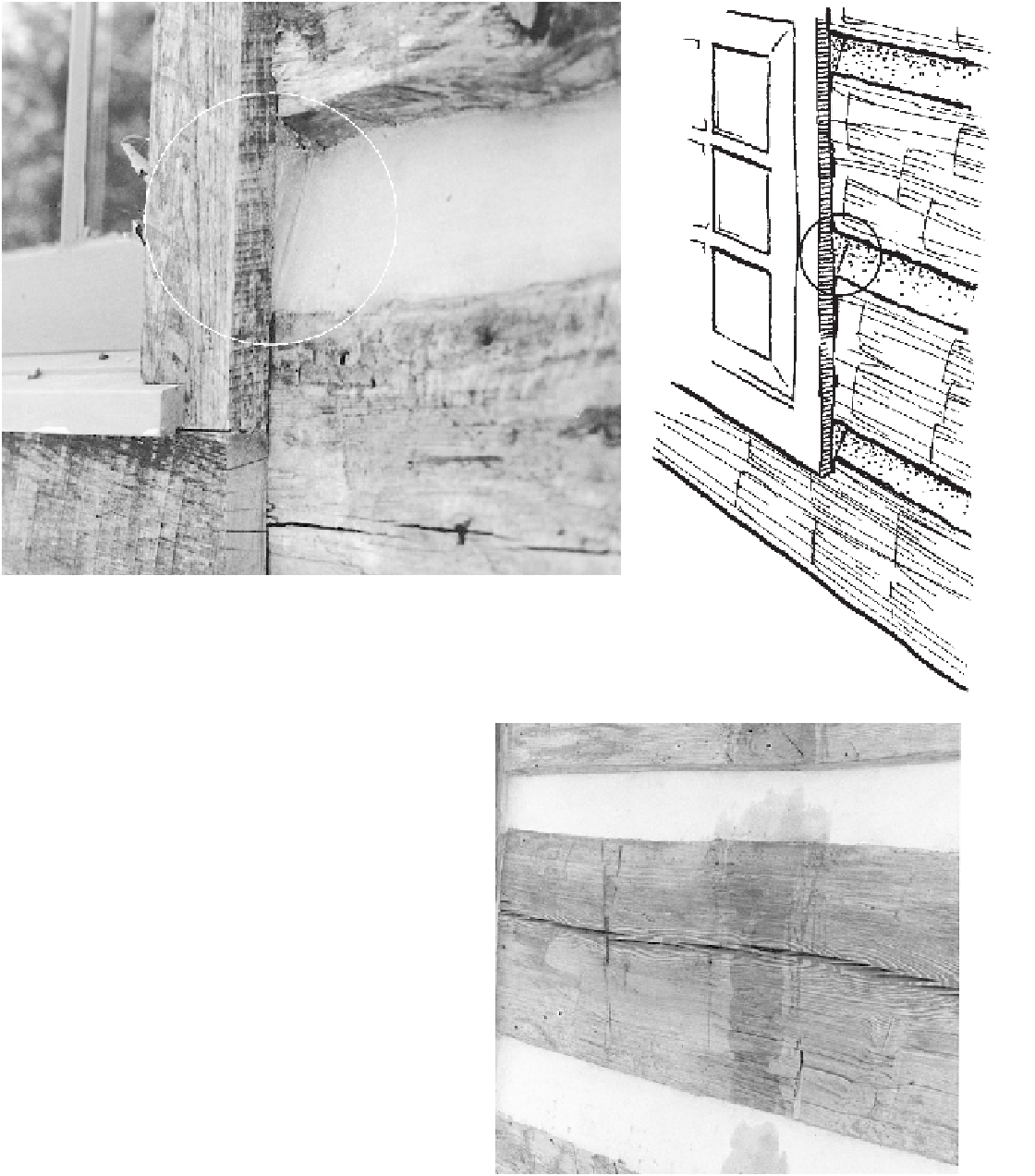Civil Engineering Reference
In-Depth Information
Window and door trim should be in place before chinking up to the window or door. The mortar
must fill the gap between the trim board and the log. The mortar is troweled onto the wire lath.
all give him with good humor. I do use redbrick-
colored sand to get away from the blinding white plas-
ter color, though. This gives me a light gray-tan, and
a more nearly authentic look.
I have not had good luck with premixed mortar,
which you can find in any mass-market building-
products store. This is intended to be used between
bricks or concrete blocks. It is not intended to be
applied in a thin, vertical layer that will be subjected
to the harsh elements. I find that use of this mortar
results in a great deal of cracking and flaking.
To apply the plaster, first dampen the log surface
with a water-filled brush or spray, and then lay on the
mix with a pointing trowel. If the lath is properly
applied, no scratch coat is necessary. Start the trowel
up under the corner left by the hewing of the top log
and slope the mortar down so that it comes out flush
at the bottom to shed water.
This tucked-in slope is such a simple matter it
should be obvious, but apparently it isn't. I rechink
This photograph shows how water falls off the lower edge of each log
and is shed by the chinking rather than working its way inside the log
and the house. We use two coats of masonry sealer to waterproof the
mortar.




